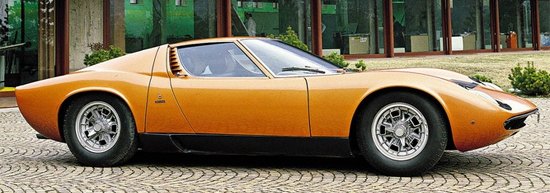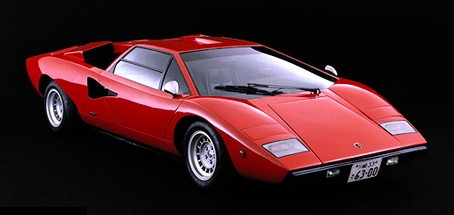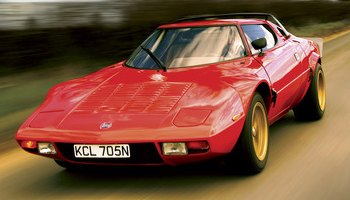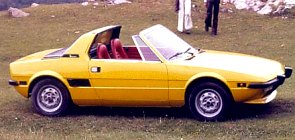
| 28 Mar, 2024 |
| New Kia K4 |
 The new Kia K4 will replace the outgoing K3 and Forte as the company's compact family car in global market excluding Europe. The new car gets a much sharper if less refined exterior design. In sedan form its C-pillars and tail are reminiscent of the game-changing Stinger GT, which has retired recently. However, the rear quarter windows, the chromed kick at the lower corner of those windows and the pillar-mounted door handles make that area a little busy and odd, which is not helped by the sudden step from the roof panel to the rear screen. Up front, the tri-star-like headlamps and trapezoidal brake ducts are very expressive, while the wider and slimmer nose intake is the latest evolution of the tigger-nose grille.  To me, the hatchback version is better looking. For the first time, the Korean compact will be available to American in hatchback form.  The car gets larger again, some 70mm longer and 50mm wider than its predecessor, making it one of the largest C-segment cars on the market. Kia has yet to reveal its wheelbase number, but expect it matches sister car Hyundai Elantra at 2720mm. Thanks to these extra dimensions, the firm claims it offer class-leading rear head and leg room.  Inside, you will find an overhauled dashboard with a dual-screen display, whose combined size is almost 30 inches diagonally. Otherwise there's little to write about.  However, mechanically the new car differs little from its predecessor. It still rides on torsion-beam axle rear suspension for cooking models or a multi-link setup for the high-performance GT. The regular engine is still that 2.0-liter Atkinson-cycle mill with exactly the same output - 147 hp and 132 lbft, saving a great deal of certification costs. Transmission remains to be a CVT. Perhaps most R&D budget has been redirected to the group's EV programs. The GT still runs the long-serving 1.6 GDT engine, but disappointingly output drops from 201 to 190 hp (SAE), although max. torque remains at 195 lbft. Worse still, both 6-speed manual and DCT gearboxes have been dropped, mandating the use of an 8-speed automatic. |
| |
| 19 Mar, 2024 |
| AMG GT43 |
 The entry-level model of AMG GT mirrors its soft-top sibling, SL43, to employ a 4-cylinder engine to save cost. However, the M139L 2.0-liter engine with electrically assisted turbocharger here produces 422 horsepower and 369 lbft of torque, compared with 381 hp and 354 lbft on the SL43 or 408 hp and 369 lbft on C43. I know, you might say it is not as powerful as the version on C63 S E-Performance, whch produces 476 hp and 402 lbft. But the latter is a plug-in hybrid, whose torque-fill function enables the use of a larger turbo without noticeable drawback to engine response. Performance is quoted at 174 mph flat out and 0-60 mph in 4.4 seconds. Losing 22 mph and 1.3 seconds from the range-topping V8 model. Also unlike the V8 models, it is rear-wheel drive only. Mercedes has yet to reveal weight figures, but considering the SL43 carries 160 kg less weight than SL63, you can expect the GT43 to weigh around 1735 kg on DIN scale. It is still a pretty heavy car, especially for one powered by a 4-pot motor. Apart from downgraded motor and drivetrain, the GT43 loses also adaptive suspension and rear-wheel steering, though both could be opted at cost. |
| |
| 14 Mar, 2024 |
| Marcello
Gandini (1938-2024) |
 Marcello Gandini, one of the greatest car designers the world ever seen, has died at the age of 85. He will be remembered for designing countless of concept and production cars that broke the mould and challenged the boundary of automotive design, such as the sexy Lamborghini Miura, the space-age Countach and Lancia Stratos, the innovative Fiat X1/9 and the distinctive yet mass-selling Citroen BX. Just as he said in a statement slamming Lamborghini's attempt to re-create his original Countach a little more than a year ago: “I have built my identity as a designer, especially when working on supercars for Lamborghini, on a unique concept: each new model I would work on would be an innovation, a breaker, something completely different from the previous one." "Courage, the ability to create a break without sticking to the success of the previous car, the confidence in not wanting to give in to habit were the very essence of my work. It is clear that markets and marketing itself has changed a lot since then, but as far as I am concerned, to repeat a model of the past, represents in my opinion the negation of the founding principles of my DNA."  Miura Miura Countach Countach Lancia Stratos Lancia Stratos Fiat X1/9 Fiat X1/9 Citroen BX Citroen BX Lancia Stratos concept Lancia Stratos concept Alfa Romeo 33 Carabo Alfa Romeo 33 Carabo Lamborghini Bravo concept Lamborghini Bravo concept |
| |
| 14 Mar, 2024 |
| Volkswagen
ID.3 GTX |
 The GTX badge was supposed to denote twin-motor 4WD versions of Volkswagen's ID range of electric cars. Somehow, it turns out to be single-motor RWD on the ID.3 GTX. This sounds strange, because Volkswagen could have badged it GTI instead. In fact, the ID.3 GTX is every bit the hot hatch version of ID.3 like what GTI stands for Golf. It is more powerful and faster than the regular ID.3, of course, but not overly so. It is a sensible balance between performance and cost or practicality. Extra power comes from the new APP550 permanent magnet motor, which has been seen on the ID.7 saloon. In standard guise, the ID.3 GTX produces 286 hp and 402 lbft of torque like its bigger brother, enabling 0-60 mph to be shortened to 5.7 seconds, while speed limit is lifted slightly to 112 mph from 99 mph. The car rides on 215mm 20-inch tires and stiffer suspension. Variable ratio steering is standard.  Sitting on top of that is the GTX Performance model. It lifts power further to 326 hp (while torque is unchanged, which is already too much), cuts 0-60 mph to 5.3 seconds and raises speed limit to 124 mph. The 20-inch wheels are shod with 235mm tires, while DCC adaptive dampers are standard on this model. Note that both GTX models employ a slightly larger battery at 79 kWh. It gives the 286 hp model an estimated WLTP range of 600 km, which is quite remarkable. However, don't expect the car to be as affordable as the conventional Golf GTI. While pricing is yet to be confirmed, it should be north of £40,000. |
| |
| 14 Mar, 2024 |
| Volkswagen
ID.7 GTX |
 The GTX version of ID.7, the largest ID series car to date, uses the badge in proper way: it means twin-motor and AWD. As in the regular ID.7, its rear axle is powered by the 286 hp / 402 lbft APP550 motor, but the front axle has added a 109 hp asynchronous motor which can be de-energized when power is not required to cut load hence energy consumption. Combined output is a disappointing 340 hp, probably restricted by the output of battery. As a result, it is not expected to be much quicker than the rear-drive ID.7. VW has yet to reveal performance figures, but 0-60 taking the high-5 seconds range would be a fair estimation considering the standard car takes 6.1 seconds. Instead of selling performance, this car might sell more for all-wheel drive security and towing capacity. |
| |
| 12 Mar, 2024 |
| Porsche
Taycan adds power and ditches rear seats to set Nurburgring record |
 The last Porsche Taycan Turbo S recorded 7:32 in Nurburgring Nordschleife a couple of years ago, which was a record for series production electric cars. Unfortunately, last year Tesla lifted the bar to 7:25 with a Model S Plaid equipped with track package. A Tesla ! How can Porsche stand the fact that an American brand beats it on its backyard track? That's why Porsche returned to drawing board and responded with Taycan Turbo GT. The GT is not the work of GT department led by Andreas Preuninger, but the usual Taycan team. However, it puts all its know-how to create the most extreme and track-friendly version of the 4-door electric car. First of all, a more powerful silicone carbide inverter supplies the new rear motor with up to 900A of current, compared with 600A on the Turbo S. This lifts its output to 1034 horsepower (DIN) and 988 lbft of torque with launch control engaged (continuous output is 789 hp), or even up to 1108 horsepower for 2 seconds. Don't laugh, that short moment is probably enough to do 0-60 mph sprint, which officially takes 2.2 seconds. 0-100 mph and 124 mph take 4.5 and 6.6 seconds, respectively, while top speed is regulated at 180 mph. Furthermore, if buyers opt for the lightweight Weissach pack, which is a no cost option, those figures will be improved further to 2.1 sec, 4.4 sec, 6.4 sec and 190 mph, beating all road cars ever built by Porsche itself. The car with Weissach pack has lapped Nurburgring in 7:07.55, 18 seconds quicker than Tesla and 25 ticks less than the outgoing Turbo S. It is a new record for series production electric cars as well as any 4-door electric cars.  However, the latter claim is a bit pointless, because the Weissach pack goes so extreme that it has the rear seats ditched and replaced with a carbon parcel shelf, so this 4-door sedan is actually a 2-seater, ridiculously. It is not the first of its kind though, as Jaguar did the same to its XE SV Project 8 a few years back, again in the attempt to break Nurburgring's 4-door record. For now, Tesla still holds the record for electric 4/5-seater. Apart from losing rear seats, what does the Weissach pack bring? It cuts 70 kg of weight by using lighter glass, by cutting sound insulation, ditching floor mats, rear audio speakers, analogue clock and even one of the USB charging ports. However, even the standard Turbo GT has taken some diets: lighter forged alloy wheels, lighter brake components, CFRP bucket seats and ditching the soft-closing mechanism of tailgate. It tips the DIN scale at 2290 kg, 5 kilos less than the Turbo S, despite the performance upgrade. Meanwhile, the Weissach pack drops that figure to 2220 kg.  The Weissach pack also improves downforce. While the standard GT has added a Gurney flap behind the active rear spoiler, the Weissach pack skips the moveable spoiler for a fixed carbon-fiber spoiler, which is claimed to produce 220 kg of downforce. Besides, the Weissach pack has altered the front air dam and underbody deflectors to add downforce. Visually, both GT cars can be distinguished from lesser models easily by the deeper air dam with vertical winglets at either sides. In the UK, the Turbo GT with or without Weissach pack costs the same at £186,000, some £25K more than Turbo S or a full £100K dearer than the base Taycan. That puts it at the same level as the 911 Turbo S and GT3 RS. To me, chasing performance figures to this extent is quite pointless. While the "hiper Taycan" is undisputedly the most powerful and the quickest accelerating Porsche road car, its track performance is impossible to match the much lighter sports cars like GT3 RS, which takes 21 seconds less to lap Nurburgring. Ditching the rear seats to do so is even more pointless. If not Tesla ignited the war, I doubt if Porsche would have created such a Taycan version.  |
| |
| 11 Mar, 2024 |
| Mercedes-AMG
E53 goes PHEV |
 Good news first: the new generation AMG E53 keeps its straight-6 engine, unlike its C-class siblings which switched to uninspiring 4-pot motor, but it gets plug-in hybrid hardware to boost output to a level matching the outgoing E63 flagship. The latest version M256M straight-6 is shared with the recent CLE53. It still features an exhaust gas turbo and an electric charger, but output is lifted from 435 to 449 horsepower, while peak torque is 413 instead of 383 lbft. However, while the CLE53 employs a 48V ISG mild hybrid, the E53 makes do with a 163 hp and 354 lbft electric motor incorporated in the transmission housing. It is supplied by a 400V, 28.6 kWh battery pack that sits above the rear axle. Maximum combined output is 612 hp and 553 lbft if you take the AMG Driver's package (as most will), or 585 hp without it. 0-60 mph takes as little as 3.7 seconds, down from the old car's 4.3s. Top speed is 174 mph with the Driver's package. Besides, the battery allows a zero-emission range of about 100 km (62 miles). On the downside, expect the PHEV hardware to add about 400 kg, bringig the kerb weight closer to 2.3 tons. That's why while its output matches the outgoing E63, its performance is not there yet. Of course, that leaves space for the upcoming E63, this time also a PHEV. In the chassis side, the E53 gets adequate upgrades, such as extra bracings to strengthen its chassis, 2-valve adaptive dampers, 4matic+ AWD, 4-wheel steering, larger brakes and wider front track. Besides, there are optional active engine mounts and active rear differential. Pricing is yet to be revealed, but expect it to get very close to the £100K mark considering the extra hardware and technology involved. |
| |
| 6 Mar, 2024 |
| Dodge
Charger |
 A year and a half ago, Stellantis unveiled the new Dodge Charger in concept form. Surprisingly, it turned the American muscle car into a performance EV, ditching V8 rumbles for artificial exhaust sound. Now the production version finally arrives. While the very fake noise of the concept is still under final tuning, the rest of the car differs very little from the concept. It looks quite good in my eyes. Size first. The new Charger is a huge car, even larger than its predecessor. It measures 5250 mm in length, 2027 mm across shoulders, 1500 mm from ground to roof and 3075 mm spans its wheelbase. This put it 150, 122, 20 and 17 mm respectively more than the old car. Predictably, the larger size and all the heavy batteries add a lot to kerb weight, tipping the scale at 2648 kg for the top model. That's about 600 kg heavier than before.  Interestingly, despite using the Charger name, this car offers both 2-door and 4-door body styles, although the latter shares the same wheelbase. This means there won't be Challenger coupe anymore in the foreseeable future. The 2-door makes debut first and will go on sale mid-year, while the 4-door (as well as ICE models) will arrive Q1 next year. Both of them are to be assembled in the Windsor plant in Canada, where the old Charger and Challenger were also built. More precisely speaking, these cars are 3-door and 5-door, because they have a standard hatchback door to aid luggage loading. As a result, boot capacity is massively increased, and the rear seat can be folded to expand cargo space further. Additionally, EV models offer a smallish front boot to store charging cables. Fore of the front boot is a Ferrari SF90-style S-duct, which draws air from the grille and exit from the bonnet, generating downforce.  While the concept is strictly an EV, the production version needs to take care of the reality that many buyers cannot or refuse to switch to electric motoring. That's why the new Charger offers 2 versions: Charger Daytona is EV, while Charger Sixpack is ICE-powered. The latter employs the "Hurricane" 3.0-liter twin-turbo straight-six that is already serving some Jeep SUVs and Ram trucks. This is made possible by the flexible STLA Large platform. The ICE models look the same as the EV except the lack of S-duct up front, as the straight-six engine needs extra space and cooling. The electric Daytona has its battery placed under floor and rear seats. All models employ 2 motors, one at each axle, to provide all-wheel drive, although the front axle can be decoupled to save energy when cruising. The rear axle has a limited slip differential. Each power module is the same, comprising of a 335 hp motor, its own step-down gearset and inverter. In theory, maximum output should be 670 hp.  However, even though the hardware is already capable of such power, Dodge deliberately restricts it to create different performance levels, selling them at different prices. The base Daytona model, called R/T, offers 416 hp continously or 456 hp in 15-second "overboost". You can pay extra to opt for a performance pack that boosts output further to 496 hp and 404 lbft (first year production cars are all equipped with this pack). In this way, 0-60 mph improves to 4.7 seconds, while top speed is limited to 137 mph. The 100.5 kWh (gross) battery enables a range of 317 miles in this car. Sitting above the R/T is the Scat Pack model. It shares the same hardware, but computer codes releases its maximum to 550 hp continuous or 590 hp on 15-sec boost or 670 hp and 627 lbft with performance pack (again this comes standard on first year production run). The latter achieves 0-60 mph in 3.3 seconds, although top speed is oddly relaxed to 134 mph and range is reduced to 260 miles This means, if you buy a base Charger Daytona R/T, you may upgrade from 456 hp to 496 hp with cash, and then turn it into Scat Pack 590 hp and ultimately 670 hp, depending on how much you can pay. In this way, Dodge wants to earn the money that you would otherwise spend to aftermarket upgrades.  Of course, with more power, you need more chassis upgrade as well. While the base car already employs multi-link front suspension, 4-link rear suspension and 275mm tires, the Scat pack employs larger brakes (380mm front and 360mm rear, instead of 350mm all-round). It is also availble with 2-valve adaptive dampers and a track pack, which introduces stiffer springs, 305/35ZR20 front and 325/25ZR20 rear rubbers, Brembo brakes with 410mm discs. I would love to learn how well a 2.65-ton monster can be driven on tracks. Charging might be a bit slower than the state of the art technology on the market, because the Daytona models employ only 400V electrical architecture and a quick charge rate of up to 183 kW. However, the upcoming Banshee model - supposedly the equivalent of Hellcat nameplate - will bring 800V battery, far more power and a 2-speed gearbox.  Regarding the petrol-powered Sixpack models, Stellantis said there will be 2 power levels as well. The base S.O. (standard output) model offers 420 hp, while H.O. (high output) produces 550 hp. They will be much lighter than the Daytona, while AWD is still standard, and they offer rear-drive mode as well. Inside, no matter 2 or 4-door, the new Charger should offer plenty of legroom and headroom for rear passengers due to its vast wheelbase and relatively tall roof. Being so wide, the rear bench should have little problem to sit 3 passengers, making it the first 5-seat coupe on the market for quite a long time. The Charger is not a luxury car, so don't expect very high quality materials and craftsmanship inside the cabin. However, it is thoroughly modern, featuring a 10.25-inch (or upgradeable to 16-inch) instrument display and a 12.3-inch infotainment touchscreen. There are plenty of buttons and drive mode switch on the slightly square steering wheel, and a row of physical buttons are provided below the touchscreen for easier access. Interactive ambient lighting and panoramic glass roof are upmarket features. |
| |
